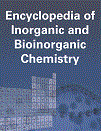αKG-Dependent Enzyme AndA Involved in Anditomin Biosynthesis
Abstract
Oxidative modification reactions catalyzed by Fe(II)/α-ketoglutarate (αKG)-dependent dioxygenases are widely observed in the primary and secondary metabolic pathways. The members of this dioxygenase superfamily catalyze a variety of reactions, including hydroxylation, epimerization, desaturation, epoxidation, ring construction, and ring expansion. In particular, the dynamic skeletal rearrangement reactions by Fe(II)/αKG-dependent dioxygenases are prevalent in fungal meroterpenoid biosynthesis. These reactions proceed via intramolecular radical transfer reactions, which are initiated by the abstraction of a hydrogen atom from the substrate with an activated Fe(IV)-oxo species. In this article, we introduce the multifunctional enzyme AndA, in the biosynthetic pathway of the fungal meroterpenoid anditomin. AndA catalyzes unusual two-step enzyme reactions to construct the bicyclo[2.2.2]octane system of anditomin. Crystallographic studies revealed that the multi-step enzyme reaction occurs in the same active site, where the position of the initial hydrogen atom abstraction is enzymatically controlled by the binding mode of the substrates. The detailed catalytic mechanism of AndA is proposed, based on the crystal structures, mutagenesis analysis, and computational studies.




